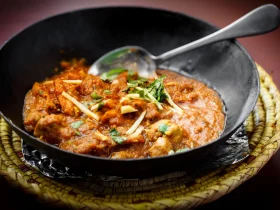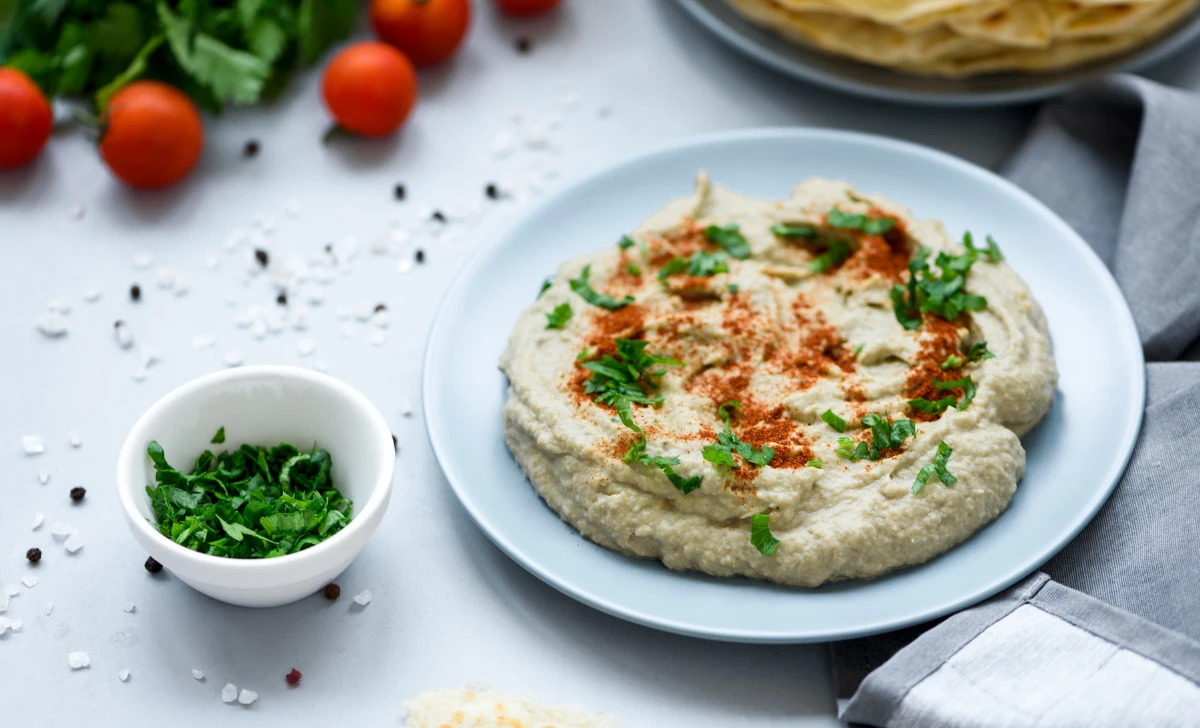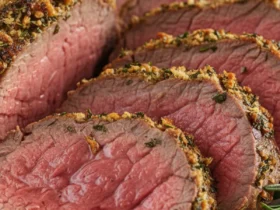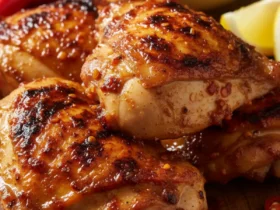In the realm of Middle Eastern cuisine, there is a delightful dish known as Baba Ganoush. This eggplant-based dip has captured the hearts and taste buds of people all over the world. With its creamy texture, smoky flavor, and versatility, Baba Ganoush has earned its place as a favorite appetizer or snack option. In this article, we will delve into the history, preparation, and health benefits of this delectable dish, along with some interesting variations and serving suggestions. So, let’s embark on a flavorful journey and learn how to make the perfect Baba Ganoush from scratch!
[ez-toc]
History
The history of Baba Ganoush traces its origins back to the rich culinary heritage of the Middle East. The exact origin of this delectable dish is a subject of debate among food historians, but it is widely believed to have originated in the Levantine region, which includes modern-day Lebanon, Syria, Palestine, and Jordan. The dish has also gained popularity in other neighboring countries, such as Turkey and Greece.
The term “Baba Ganoush” is derived from two Arabic words: “baba,” which means father or grandfather, and “ganoush,” which translates to coquettish or pampered. Some food experts believe that the name reflects the dish’s status as a cherished and beloved culinary creation.
The origins of Baba Ganoush can be traced back to the Ottoman Empire, which once encompassed a vast territory across the Middle East and beyond. During this period, eggplants were introduced to the region from the Indian subcontinent. These purple-skinned vegetables, also known as aubergines, quickly became a staple in Middle Eastern cuisine, and inventive cooks began experimenting with various ways to prepare them.
The traditional method of making Baba Ganoush involves roasting eggplants over an open flame, which imparts a smoky flavor to the flesh. The roasted eggplants are then combined with other key ingredients, such as tahini (sesame paste), garlic, lemon juice, and olive oil, to create the creamy and flavorful dip we know today.
Throughout history, Baba Ganoush has been prepared and enjoyed in homes, markets, and restaurants across the Middle East. It was often served as part of mezze, a selection of small dishes served as appetizers or side dishes in Arab and Mediterranean cuisine. The popularity of Baba Ganoush gradually spread beyond the Middle East, finding its way into international markets and restaurants, where it continues to be celebrated as a unique and exotic culinary delight.
As the world has become more interconnected, and interest in global cuisines has grown, Baba Ganoush has found its place on menus in various parts of the world. Its popularity has surged among health-conscious individuals seeking nutritious and flavorful alternatives to traditional dips and spreads.
Today, Baba Ganoush stands as a testament to the rich cultural diversity and culinary expertise of the Middle East. Whether enjoyed with pita bread, fresh vegetables, or as a spread in sandwiches, Baba Ganoush continues to win the hearts of food enthusiasts worldwide, providing a delicious taste of history and tradition with every delectable bite.
Time
| Step | Time |
|---|---|
| Roasting the Eggplant | 30-40 minutes |
| Blending the Ingredients | 10 minutes |
| Seasoning to Perfection | 5 minutes |
| Total Cooking and Preparation Time | 45-55 minutes |
Please note that the cooking and preparation times may vary depending on factors such as the size of the eggplant, the efficiency of the kitchen equipment, and personal cooking experience. It’s essential to roast the eggplant until it is fully cooked and tender, as this is crucial for achieving the desired smoky flavor and creamy texture in the Baba Ganoush.
Ingredients
| Ingredients | Quantity |
|---|---|
| Eggplant | 2 medium-sized |
| Tahini (sesame paste) | 2 tablespoons |
| Garlic cloves | 2 cloves |
| Lemon juice | 1 lemon |
| Extra-virgin olive oil | 2 tablespoons |
| Fresh parsley (optional) | A handful |
| Ground cumin (optional) | 1/2 teaspoon |
| Salt and pepper | To taste |
| Pita bread or vegetables | For serving |
Note: The quantities mentioned in the table are approximate measurements for a 2-person serving. You can adjust the quantities according to your taste preferences and the size of the eggplants. Additionally, fresh parsley and ground cumin are optional ingredients that can enhance the flavor of the Baba Ganoush.
Directions
Step 1: Roasting the Eggplant
- Preheat your oven to 400°F (200°C).
- Wash the eggplants and pat them dry with a paper towel.
- Prick the eggplants with a fork or knife in a few places to allow steam to escape during roasting.
- Place the eggplants on a baking sheet lined with parchment paper.
- Roast the eggplants in the preheated oven for 30-40 minutes or until they become tender and collapse.
Step 2: Blending the Ingredients
- Allow the roasted eggplants to cool for a few minutes.
- Cut each eggplant in half and scoop out the soft flesh with a spoon, discarding the charred skin.
- Transfer the eggplant flesh to a food processor or blender.
- Add the tahini, garlic cloves, and lemon juice to the processor.
- Blend the ingredients until you achieve a smooth and creamy texture. You may need to stop and scrape down the sides of the processor to ensure even blending.
Step 3: Seasoning to Perfection
- With the blended mixture in a bowl, add the extra-virgin olive oil, and mix well to incorporate.
- If desired, add a pinch of ground cumin to enhance the flavor of the Baba Ganoush.
- Season with salt and pepper to taste, adjusting the seasoning according to your preferences.
Step 4: Serving and Pairing
- Transfer the prepared Baba Ganoush to a serving dish.
- Garnish with a handful of fresh parsley, chopped (optional), for a burst of color and freshness.
- Serve the Baba Ganoush with warm pita bread, freshly sliced vegetables, or as a spread in sandwiches.
Equipment Required
Nutrition Information
| Nutrition Information | Per Serving (2-Person Serving) |
|---|---|
| Serving Size | 1/2 cup (about 125 grams) |
| Calories | 180 calories |
| Total Fat | 14g |
| Saturated Fat | 2g |
| Trans Fat | 0g |
| Cholesterol | 0mg |
| Sodium | 220mg |
| Total Carbohydrates | 12g |
| Dietary Fiber | 5g |
| Sugars | 5g |
| Protein | 4g |
| Vitamin D | 0mcg |
| Calcium | 45mg |
| Iron | 1mg |
| Potassium | 340mg |
Please note that the nutrition information provided above is an approximate estimation and may vary based on the specific brands and quantities of ingredients used in the recipe. It’s essential to refer to the nutrition labels on the products you use for the most accurate information. Additionally, the serving size can be adjusted according to individual preferences and dietary requirements. Enjoy your delicious and nutritious Baba Ganoush!
Tips
- Choosing the Right Eggplants: Opt for medium-sized eggplants with smooth, shiny skin. Avoid ones with bruises or blemishes, as they may affect the flavor and texture of the Baba Ganoush.
- Pricking the Eggplants: Ensure you prick the eggplants with a fork or knife before roasting. This prevents them from bursting and allows steam to escape during the roasting process.
- Getting the Perfect Roast: Roast the eggplants until they are fully tender and have collapsed. Over-roasting can result in a bitter taste, so keep a close eye on them while they cook.
- Customizing the Texture: If you prefer a chunkier Baba Ganoush, pulse the ingredients in the food processor a few times rather than blending them until smooth.
- Adjusting Tahini and Lemon: The amount of tahini and lemon juice can be adjusted to suit your taste preferences. Start with the suggested quantities and add more if you desire a creamier or tangier dip.
- Balancing Flavors: Taste and adjust the seasoning as needed. Salt and pepper can make a significant difference in enhancing the overall flavor of the Baba Ganoush.
- Garnish with Fresh Herbs: For added freshness and visual appeal, garnish the Baba Ganoush with a handful of chopped fresh parsley or cilantro before serving.
- Roasting Over an Open Flame: For an even more intense smoky flavor, consider roasting the eggplants directly over an open flame on your gas stove. Turn them occasionally until the skin is charred, and the flesh becomes tender.
Pros & Cons
| Pros | Cons |
|---|---|
| ✔️ Bursting with Flavor | ❌ Time-Consuming Preparation |
| ✔️ Healthy and Nutritious | ❌ Requires an Oven for Roasting |
| ✔️ Versatile and Customizable | ❌ Potential for Bitter Taste |
| ✔️ Vegan and Gluten-Free-Friendly | ❌ Tahini Allergy or Sensitivity |
| ✔️ Great Appetizer or Party Favorite | ❌ Eggplant Availability and Quality |
Conclusion
In conclusion, Baba Ganoush is a captivating Middle Eastern dip that promises to elevate your culinary experience with its smoky aroma and velvety texture. With a delectable blend of roasted eggplants, tahini, garlic, and lemon juice, this appetizer is a true gastronomic delight that is both healthy and delicious.
Dive into the world of Middle Eastern cuisine and indulge in the vibrant flavors that Baba Ganoush has to offer. Its versatility allows you to customize the dip to your liking, making it a perfect match for your taste preferences and dietary needs. Whether you’re hosting a party, seeking a nutritious snack, or simply exploring new and exciting flavors, Baba Ganoush is sure to leave a lasting impression on your taste buds and your guests.
While the preparation process may require some patience and attention to detail, the rewards are well worth the effort. Roast those eggplants to perfection, blend the ingredients with care, and savor the heavenly combination of smoky richness and tangy accents.
So, why not embark on a culinary adventure and try your hand at making Baba Ganoush from scratch? Unlock the full potential of this delightful dip, and bring the flavors of the Middle East to your table. Delight in the joy of creating a dish that not only satisfies your taste buds but also nourishes your body with wholesome, plant-based goodness.
Embrace the exotic flavors, experiment with variations, and savor each bite of this fantastic Middle Eastern delicacy. Whether enjoyed with warm pita bread, crispy vegetables, or as a spread in sandwiches, Baba Ganoush is sure to leave you and your loved ones craving for more.
So, what are you waiting for? Get into the kitchen, gather your ingredients, and experience the magic of Baba Ganoush firsthand. It’s time to immerse yourself in the world of tantalizing flavors and embark on a culinary journey that will leave you with a newfound appreciation for the beauty of Middle Eastern cuisine.
Get ready to impress your family and friends with this delightful dip, and create lasting memories over the shared joy of Baba Ganoush. From parties to everyday snacking, this versatile dish is bound to become a star on your dining table.
So, roll up your sleeves, don your apron, and let the enchanting aroma of roasted eggplants and fragrant spices fill your kitchen. It’s time to tantalize your taste buds and transport your senses to the rich and colorful world of Middle Eastern cuisine. Prepare, indulge, and enjoy the exotic flavors of Baba Ganoush today!
Facts
- Fact 1: A Flavorful Journey Across Continents 🌍
- 👉 Did you know that Baba Ganoush’s roots can be traced back to the Ottoman Empire in the Middle East? From there, it embarked on a delicious journey across continents, captivating taste buds worldwide!
- Fact 2: Baba Ganoush – The Coquettish Delight 🌹
- 👉 The name “Baba Ganoush” is a delightful combination of Arabic words. “Baba” means father or grandfather, while “ganoush” translates to coquettish or pampered. It’s no wonder this dish is beloved and cherished across cultures.
- Fact 3: Roasting Eggplants – A Smoky Tradition 🔥
- 👉 The traditional method of roasting eggplants over an open flame imparts a unique smoky flavor to Baba Ganoush. This age-old technique has been passed down through generations, ensuring a distinctive and unforgettable taste.
- Fact 4: Baba Ganoush vs. Hummus – A Tasty Rivalry 🤝
- 👉 Move over, hummus! While both Baba Ganoush and hummus are popular Middle Eastern dips, they have distinct characteristics. While hummus features chickpeas, Baba Ganoush boasts roasted eggplants, creating a delightful rivalry on the appetizer table.
- Fact 5: Baba Ganoush Around the World – A Global Sensation 🌐
- 👉 Baba Ganoush’s global popularity has led to unique variations in different cuisines. Some regions add roasted bell peppers or yogurt for additional flavors, proving that this dip knows no boundaries when it comes to culinary creativity!
FAQ’s
Is Baba Ganoush spicy?
No, Baba Ganoush is not inherently spicy. The recipe provided in this article does not include spicy ingredients. However, if you enjoy a bit of heat, you can add a dash of cayenne pepper or crushed red pepper flakes during the seasoning step.
Can I use a grill instead of an oven to roast the eggplants?
Absolutely! Grilling the eggplants over medium-high heat can provide an even smokier flavor. Place them directly on the grill grates and turn occasionally until the skin is charred and the flesh is tender.
Can I make Baba Ganoush in advance?
Yes, you can prepare Baba Ganoush ahead of time. Store it in an airtight container in the refrigerator for up to 3 days. Remember to give it a good stir before serving.
Is Baba Ganoush suitable for vegetarians and vegans?
Yes, Baba Ganoush is entirely plant-based and suitable for vegetarians and vegans. It contains no animal products.
Can I freeze Baba Ganoush?
While freezing may slightly alter the texture, you can freeze Baba Ganoush in a well-sealed container for up to 2 months. Thaw it in the refrigerator before serving.
Are there any gluten-containing ingredients in Baba Ganoush?
The traditional Baba Ganoush recipe provided in this article is gluten-free. However, when serving with bread or crackers, ensure you choose gluten-free options if you have dietary restrictions.
What can I serve with Baba Ganoush besides pita bread?
Baba Ganoush pairs wonderfully with various options such as fresh vegetable sticks (carrots, cucumbers, bell peppers), whole-grain crackers, or as a spread in sandwiches.
Can I use store-bought roasted eggplant for this recipe?
While it’s best to roast the eggplants at home for optimal flavor, you can use store-bought roasted eggplant if you’re short on time. Just make sure it has a smoky flavor to achieve the authentic taste of Baba Ganoush.
Is there a low-fat version of Baba Ganoush?
The primary fat source in Baba Ganoush comes from tahini and olive oil. You can reduce the amount of tahini or opt for a lower-fat tahini variation to make a lighter version of the dip.
Can I use a blender instead of a food processor to make Baba Ganoush?
Yes, you can use a blender instead of a food processor to make Baba Ganoush. However, depending on the blender’s size and design, you may need to blend the ingredients in batches to ensure even mixing.












Leave a Review